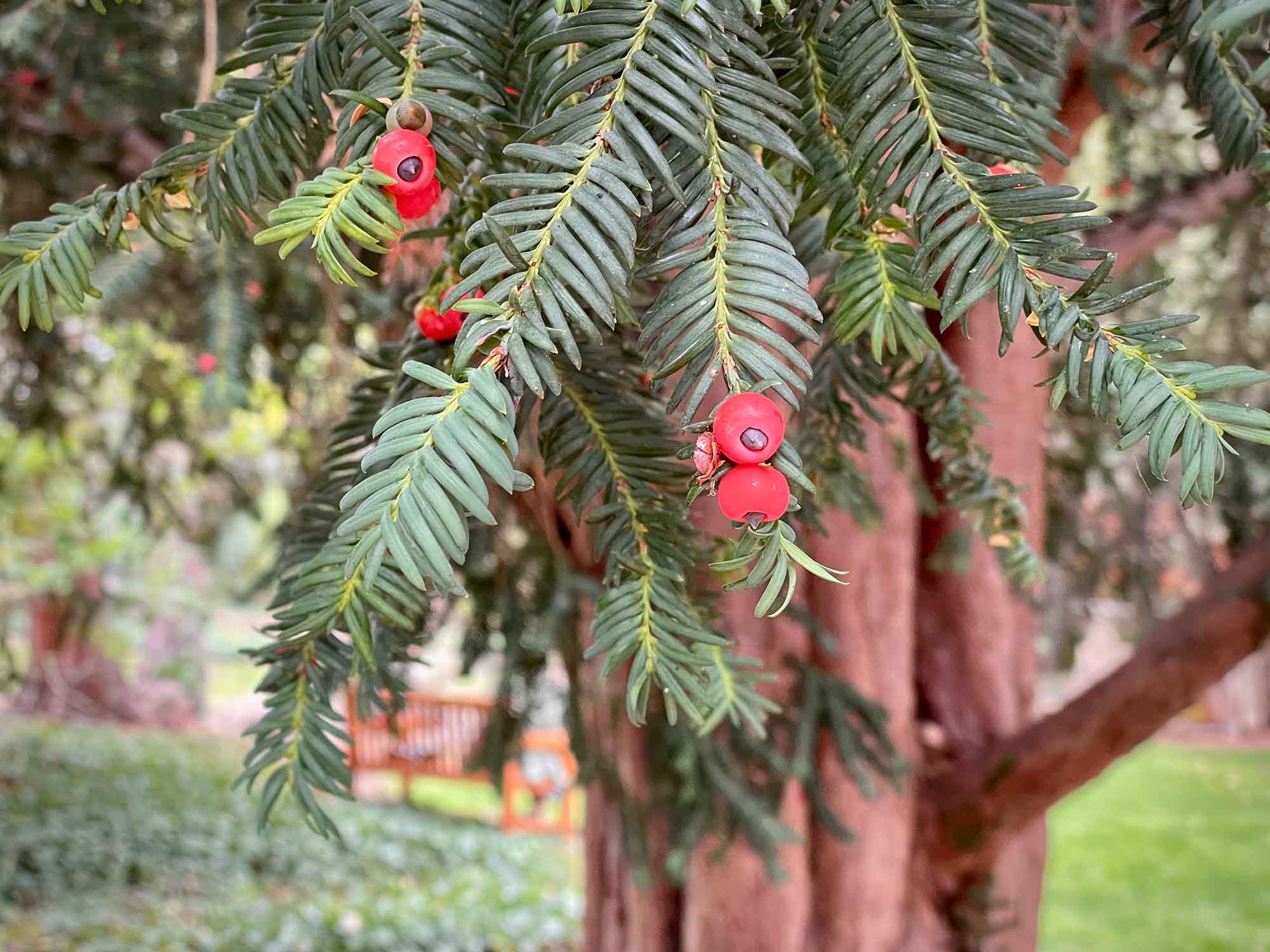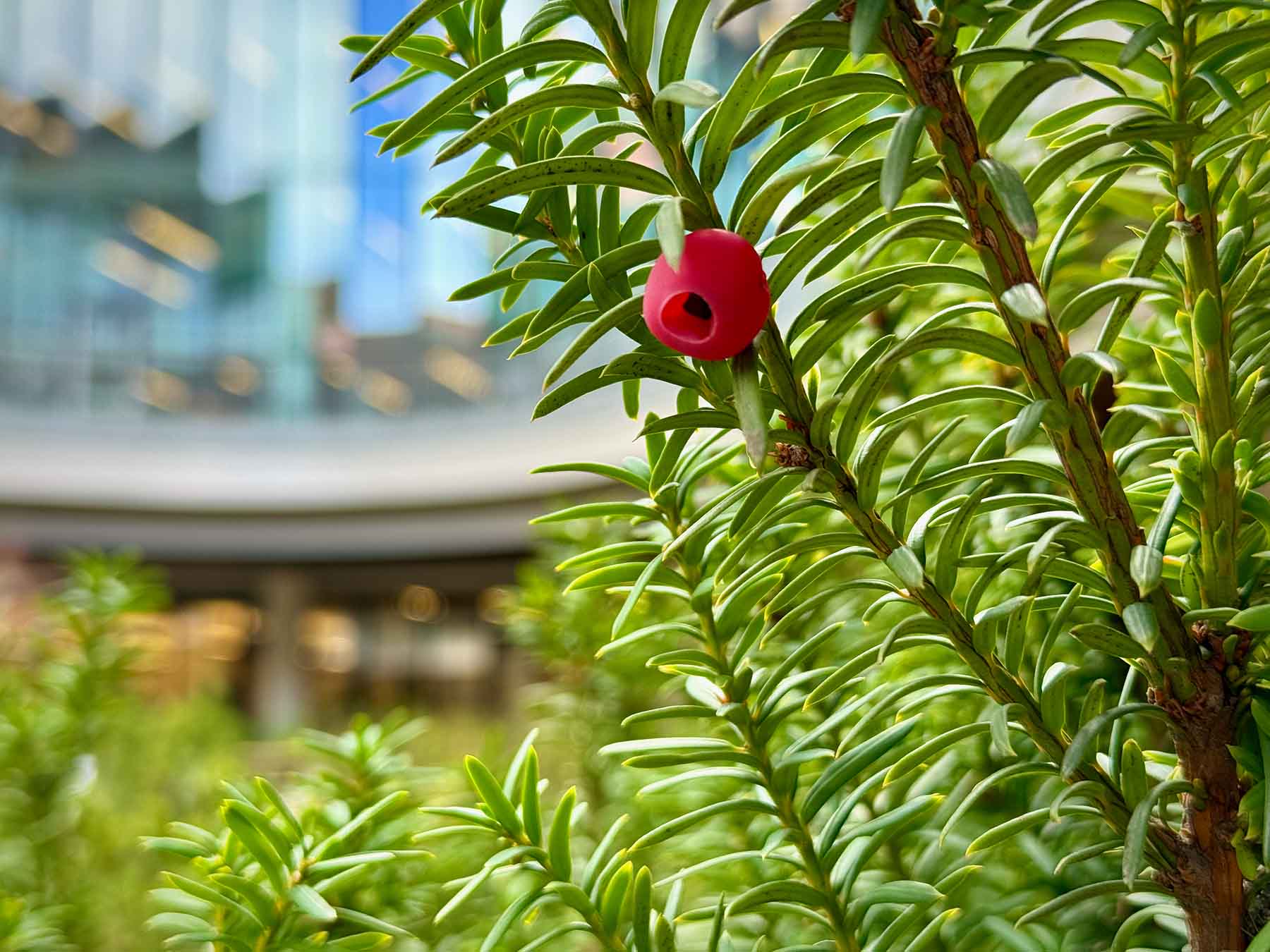Taxus baccata
 yew
yew
Once one becomes familiar with the yew it is readily recognized by its dark green dense appearance. The needles are about an inch long, paler underneath, and may be in flat sprays. Male and female trees occur; the male cones are round and scaly, but the female cone is a very noticeable red fleshy aril containing a hard-shelled poisonous seed. The leaves are also poisonous to animals that eat them, and Julius Caesar reported that the Gaulish chieftain Catuvolcus committed suicide by eating yew. See three specimens in the front half of Kingscote Gardens, two females not far from the front corners of the house and the other near the bunya bunya. In Palo Alto, a 25-foot-tall multitrunk T. baccata grows at the Museum of American Heritage, 351 Homer Avenue. The tree undoubtedly was planted soon after Dr. Tom Williams, one of Palo Alto’s early physicians, built the structure as his home in 1907.
T. baccata ‘Stricta’ (also called ‘Fastigata’), the Irish yew, was among the early university plantings and may still be seen framing doorways of some older campus buildings (the ones at the entrance to Roble Gym and Dance Studio were removed, probably during the 2014–2016 renovation, when the landscaping was “rehabilitated in the spirit of the original design”). See it used as the backdrop to the pond at Kingscote Gardens. More than 200 Irish yews from cuttings of plants that originated at Muckross House, Ireland, form the Yew Allee at Filoli in Woodside.
The wood is famous for hardness, durability, and versatility. Bows were made of yew in antiquity, according to Virgil, and yews also armed English longbowmen. Yews were planted all over England as a military measure, and survive today, in protected places, especially churchyards, where their dark and somber appearance is an unintended consequence of old wars. Virgil also comments on their appearance:
Est via declivis funesta nubila taxo.
Ducit ad infernos per muta silentia sedes.
“A downhill path is shaded by the funereal yew, it leads through soundless silence to the nether regions.” The cypress, the goldenrain, pagoda, and mayten trees have also been planted as memorials.
T. cuspidata, Japanese yew, is very similar. Its cultivars can be seen around campus, for example the dwarf ‘Nana’ strewn in front of Old Chemistry. A substantial Japanese yew hedge on the Jane Stanford Way side of the Lou Henry Hoover Building was removed when the Shultze Building was constructed at that spot. Hybrids between these species, dubbed T. × media, are common horticulturally; ‘Hatfieldii’, a male clone, was supposed to be planted in the central courtyard of ChEM-H and Neurosciences but a cradle (or nursery) swap may have occurred: bright red female cones have been spotted on some.
Name derivation: Taxus – The Latin name for yew tree; baccata – berry-bearing; Fastigata = with upright branches.
About this Entry: The main text of this entry is from the book Trees of Stanford and Environs, by Ronald Bracewell, published 2005. Removal of Roble pair noted (Aug 2018, SP). Various edits; Japanese yew cultivar locations added (Jan 2024, SP).





